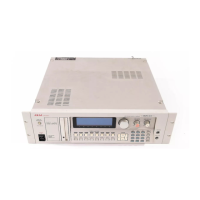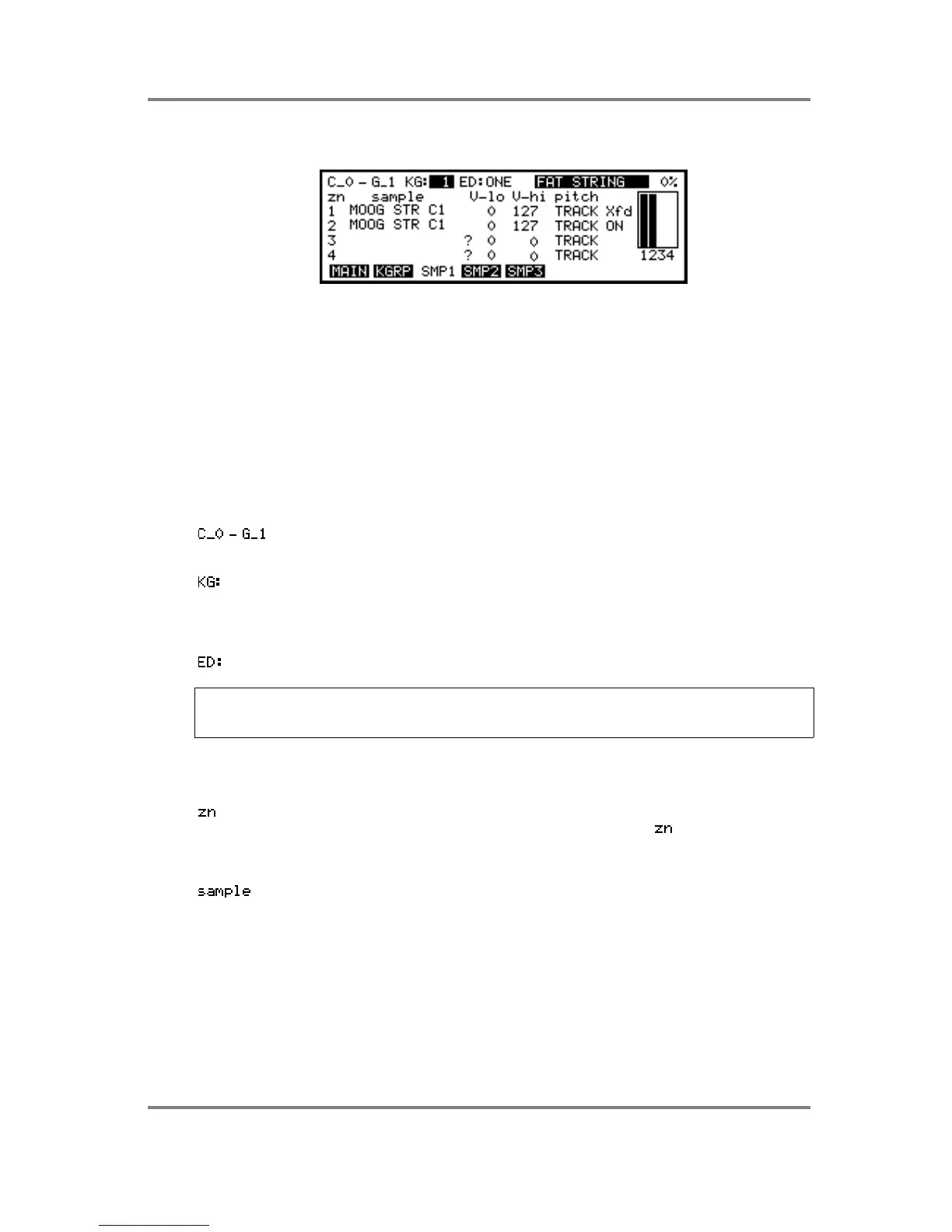EDIT PROGRAM - SINGLE
S3200XL Operator’s Manual - Version 1.00 Page 93
For layering sounds, you might like to set something like the following:
Here we have assigned two identical synth samples to zones 1 and 2 and, as in the stereo
program above, both have a velocity range of 0-127. In the SMP2 page, these can be detuned
against each other and panned hard left and right to create a fat, warm, pseudo-stereo synth
sound. This is a quick way of achieving this kind of sound. Of course, they don’t have to be
identical samples - anything will do. The trick with this method is that both samples share the
same processing with the filters and envelope generators making adjustment and editing very
simple.
If you want to be more adventurous, you could use totally separate keygroups for layering
synth sound (or acoustic sounds, for that matter) and each could have different envelope and
filter characteristics.
The parameters in this page are:
This shows the current keygroup’s key range as set in the SPAN page. It can
be altered here if you wish.
This shows the currently selected keygroup and allows you to select others
using the DATA control. As always in PROGRAM EDIT, you may quickly select
a keygroup by holding the EDIT select key and playing an appropriate note on
the keyboard.
Here you can select to edit ONE or ALL keygroups.
NOTE: Selecting ALL doesn’t apply to assigning samples when using the DATA control.
Only one sample is assigned and the other keygroups remain unchanged even if ALL is
selected.
Of course, as usual, the name of the current program is shown at the top right hand of the
screen.
This shows the four zones in the column below. You will notice that in all SMP
pages, as you play, a small dot appears alongside the field to signify which
zone is playing - this is useful in identifying which sample is playing in a
complex velocity switched program.
This shows the sample(s) currently assigned to the zone(s). If a sample name
is assigned but it does not exist in the S3200XL’s memory, a “?” will appear
alongside it to indicate that it is missing. To assign a sample, simply move the
cursor to this field and scroll through the available samples in memory with the
DATA control.
To delete a sample from a zone, simply move the cursor to it, press NAME and
replace the name with blanks. To erase a group of samples in the same zone in
different keygroups, do the same but with ALL selected.

